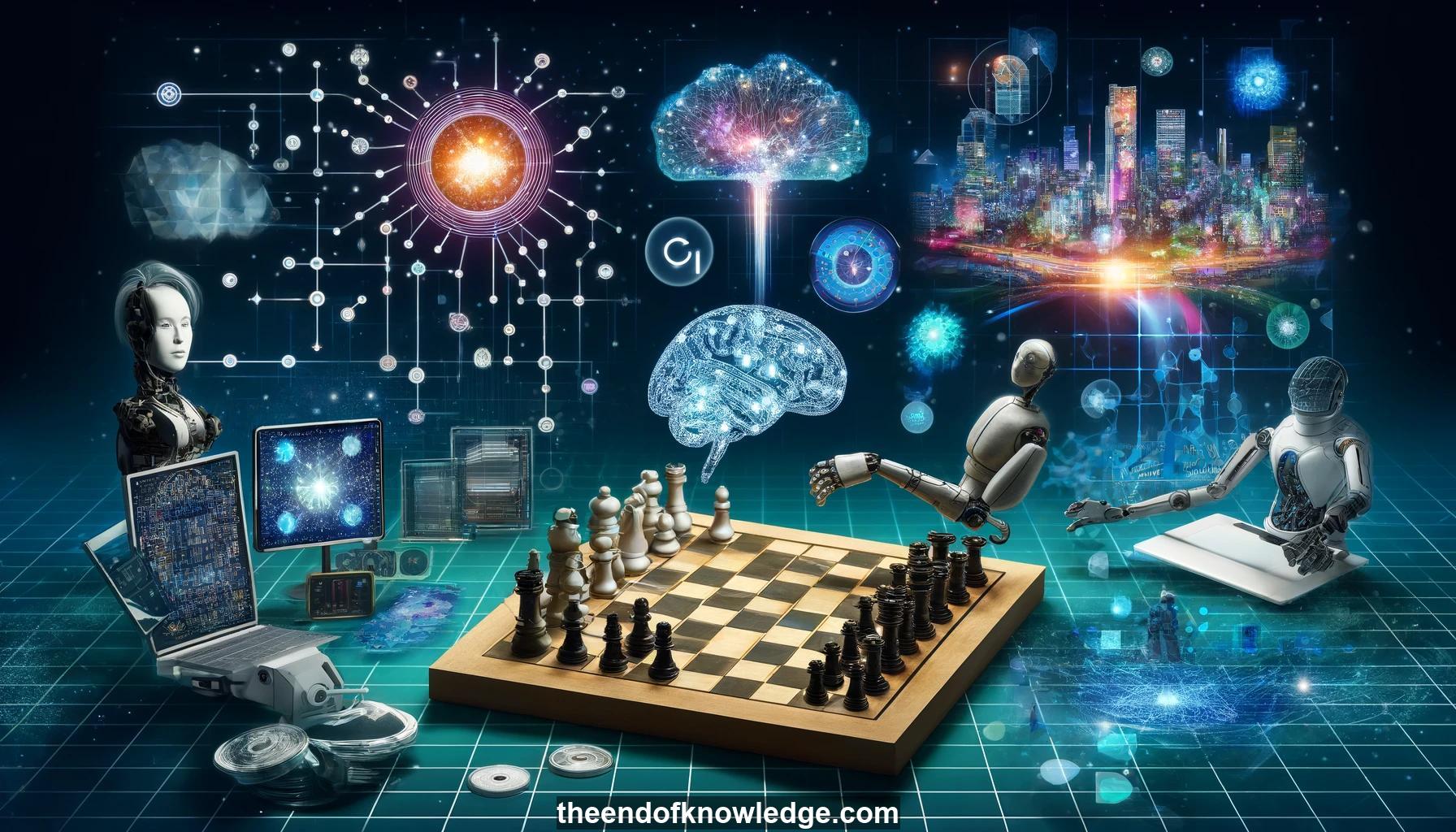 >
>
Concept Graph & Resume using Claude 3.5 Sonnet | Chat GPT4o | Llama 3:
Resume:
1.- RL optimizes decisions to maximize future rewards. Deep learning enables learning representations from raw inputs. Combining them allows solving complex tasks.
2.- Deep learning composes parameterized functions into a deep representation. Gradients can be computed via the chain rule to optimize the loss.
3.- Deep neural networks combine linear transformations, nonlinear activations, and loss functions. Parameters are optimized using stochastic gradient descent.
4.- Weight sharing over time (RNNs) and space (ConvNets) leads to powerful neural network architectures.
5.- RL formalizes the interaction between an agent and environment, with the goal of the agent learning to maximize rewards.
6.- RL may include a policy (agent's behavior), value function (estimate of future rewards), and model (understanding of the environment).
7.- Why RL? It's a general framework for decision-making, relevant wherever optimal actions need to be selected to achieve goals.
8.- Value-based RL estimates the optimal value function (max achievable rewards). Once known, an optimal policy follows by selecting value-maximizing actions.
9.- The optimal value function obeys a recursive Bellman equation due to the iterative nature of the reward maximization process.
10.- In Q-learning, an action-value function Q(s,a) is estimated, representing the value of each action a in each state s.
11.- Deep Q-Networks (DQN) use deep neural networks to represent the Q-function, trained using Q-learning with experience replay for stability.
12.- Improvements to DQN include Double DQN (reducing overestimation bias), Prioritized Experience Replay, and Dueling Networks (separating value/advantage streams).
13.- Distributed DQN variants like Gorila enable faster training by parallelizing across machines. Similar speedups achievable using multiple threads on a CPU.
14.- The Asynchronous Advantage Actor-Critic (A3C) algorithm uses parallel actor-learners, each with its own network, to decorrelate and stabilize learning.
15.- Policy gradient methods directly optimize the policy as a neural network using an objective function and gradient ascent.
16.- The policy gradient theorem expresses the gradient of the RL objective in terms of reward-weighted log policy gradients.
17.- Actor-critic methods learn both a policy (actor) and value function (critic). The critic guides policy updates.
18.- Deterministic policy gradients provide an efficient policy gradient formulation by exploiting action-value function gradients, avoiding integration over actions.
19.- Continuous control with deep RL is possible using actor-critic variants like DDPG, which interleaves learning a Q-function and deterministic policy.
20.- Complex variants using parallelism and RNNs can solve challenging problems like continuous control from pixels (e.g. DPPO).
21.- Strategic games like poker are approachable by combining RL with counterfactual regret minimization, using deep learning for function approximation.
22.- Model-based RL aims to learn an environment model and use it for planning. Key challenges are model inaccuracies and compounding errors.
23.- Go is challenging for AI due to its massive search space and the difficulty of evaluating board positions.
24.- Deep neural networks can be used to represent Go board positions and move probabilities (policy) or position values (value).
25.- Supervised learning on expert games can yield strong initial policy networks. RL via self-play can further improve the policy.
26.- Value networks can be trained on self-play games to provide position value estimates. Data diversity is critical to avoid overfitting.
27.- Combining neural network policies and values with Monte Carlo Tree Search enables highly selective search in Go.
28.- AlphaGo defeated the strongest human Go players by combining deep RL, search, and self-play training.
29.- Deep RL has seen progress and applications beyond just DeepMind. Key focuses are innovation, generality, and real-world impact.
30.- Promising future areas for deep RL include continued algorithmic improvements, healthcare, smartphone assistants, and conversational AI.
Knowledge Vault built byDavid Vivancos 2024